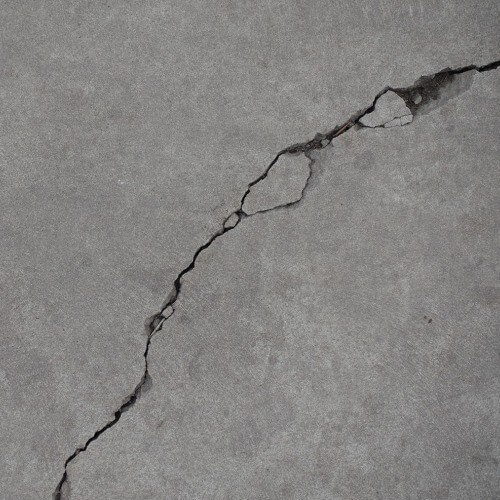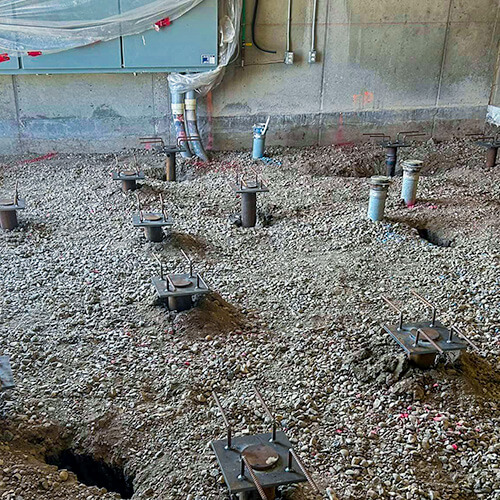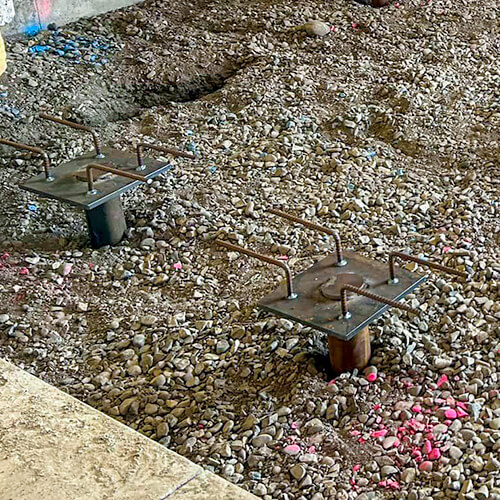Concrete Screw Piles
Concrete slabs are always susceptible to shifting or cracking:
- Uneven settlement of the supporting soil beneath
- Excessive or concentrated loads
- Too much moisture can cause the subgrade or underlying soil to swell, settle unevenly, or erode
- Seismic activity, frost heaving, or nearby vibrations impose significant problems
These environmental stressors lead to the cracking or shifting of all concrete slabs. Fortunately, helical piles are the solution to these issues. Installing screw piles under concrete slabs provides support for the concrete that the underlying soil on its own cannot provide.

Contact Us for a Quote Today
How Do Screw Piles Help Concrete Slabs?
Screw piles are great to use as a foundation system to provide support for concrete slabs. They are installed by screwing them into the ground by rotating the pile so that its helical blade turns into the soil like the threads of a screw. The helical shape of the piles allows them to effectively transfer the load from the slab to the stable soil below. By providing a strong and stable foundation, screw piles help prevent settling, sinking, or shifting of the concrete slab. This is very beneficial to keep sidewalks, garage floors and patios from cracking.
Screw piles distribute the load of the concrete slab over a larger area, reducing the stress on the soil and minimising the risk of localised settlement. This is particularly beneficial for slabs subjected to heavy loads or uneven loading conditions. The helical shape of the piles helps to disperse the load evenly and prevent concentrated stress points.


How are Screw Piles Installed
In Concrete?
To use screw piles for concrete slab support, it is best to install the screw piles into the ground before the concrete has been poured. Prior to pouring the concrete, the screw piles should be evenly distributed throughout the location where the slab is going to go. This will help evenly distribute the weight of the slab and the loads it is supporting to the screw foundation. The screw pile foundation then transfers those loads and stresses deep into the ground.
In most cases, the concrete can simply be poured over the screw piles with their basic flat caps fixed. The concrete will bind the screw pile foundation together, and because most forces held by a concrete slab are downward forces from gravity, this usually works just fine. However, in situations where the concrete is needed to support more significant loads, the screw piles can be affixed with special rebar caps.
What are Rebar Screw Pile Caps and What Do They Do?
Screw Pile caps can be best described as adaptors that go between the structure that is meant to be supported and the screw pile’s shaft. There are many different types of screw pile caps available to be used depending on the type of structure that is being supported.
Concrete is tied together using reinforcing rebar, which is added to concrete to enhance its strength and durability. The rebar caps for screw piles allow the screw pile caps to be tied into the rest of the reinforcing rebar being used in the pouring of the slab. Doing this significantly improves the force transfer of the loads of the concrete to the screw pile foundation, which in turn reduces cracking and degradation of concrete slabs in high-load situations.

